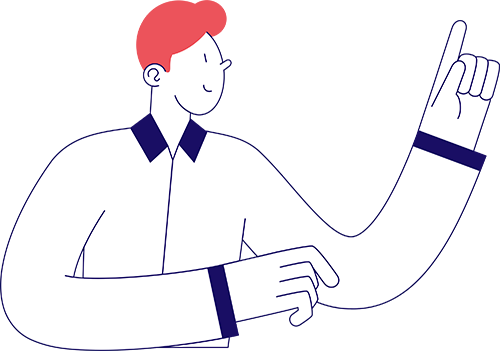THE RIGHT WAY TO PREPARE
Ace Your Alberta Motorcycle Knowledge Test: A Study Guide
 So you’re eyeing the Alberta Motorcycle Knowledge Test, ready to throttle up and hit the road. It’s a big step, steering towards freedom on two wheels. This guide will be your roadmap through every twist and turn of the process.
So you’re eyeing the Alberta Motorcycle Knowledge Test, ready to throttle up and hit the road. It’s a big step, steering towards freedom on two wheels. This guide will be your roadmap through every twist and turn of the process.
You’ll get savvy about eligibility criteria, so there are no surprises when you roll up for the test. We’ve also got insider tips on using practice tests like a pro, memorizing signs as if they were your favorite song lyrics and acing exam day with cool confidence.
And once you pass? We won’t leave you hanging; we’ll show what’s next in riding off into that Albertan sunset—license in hand.
Understanding the Alberta Motorcycle Knowledge Test
If you think taking the Alberta Motorcycle Knowledge Test is as easy as riding a bike, it’s time to gear up for a bit of a reality check. This test is your first legal hurdle in becoming part of the excellent riders’ club.
What’s on The Menu?
The knowledge test isn’t just some multiple-choice questionnaire you can use with common sense alone. It dishes out questions on traffic laws specific to motorcycles, road signs, and safe driving practices—a full platter designed to ensure you know your stuff before hitting the road. Expect around 30 questions where each one needs your undivided attention like a motorcycle does on a tight curve.
To get started right now, check out Alberta’s official government page. It gives all the details about what you’ll face when taking this crucial step towards motorcycling freedom.
Tackling Traffic Laws Like A Pro
Digging into traffic laws might sound dryer than beef jerky, but hear me out; these rules keep everyone from turning roads into bumper car attractions. We’re talking about everything from passing vehicles safely to understanding those pesky lane filtering laws—you know, where bikers squeeze between cars during heavy traffic? Yeah, it’s not always legal, so study up.
You need every ounce of knowledge packed tightly under your helmet because there’s no room for error here—not if safety and passing are both priorities (which they should be).
Road Signs: They’re Not Just Street Art
Road signs aren’t there just for their good looks—they’re lifesavers painted in bright colors and bold shapes. Your job? Know them better than your favorite song lyrics because sometimes even Spotify gets them wrong, but misreading stop signs could cost more than an off-key moment at karaoke night.
Acing this portion means recognizing what each sign stands for faster than saying, ‘Look, Ma—no hands.’ which I strongly advise against while riding.
Remember, folks: Understanding the layout and content of this exam isn’t only about memorizing facts—it’s also about embracing a safe biking culture from day one. Because once you’ve got that permit clasped in hand, a post-test victory dance is included. It’s just chapter one of being street-smart on two wheels.
Eligibility Criteria for the Alberta Motorcycle Knowledge Test
If you’re looking to ride a motorcycle in Alberta, first things first: you’ve got to pass the knowledge test. But before you can show off your smarts on road rules and signs, let’s make sure you tick all the boxes for eligibility.
Age Restrictions
The First Hurdle
Are you gearing up to hit the open road? Cool your engines if you’re under 16 because that’s where they draw the line. To take this test, you must be at least 16. If you’re between 16 and 18, get ready for some paperwork – parental consent is non-negotiable.
ID Requirements
No ID, No Test
Your wallet needs more than cash; it should carry an acceptable ID, too. Think government-issued with your photo plastered on it – like a driver’s license or passport. This proves who you are, so there’s no funny business when taking that test.
The Prerequisite Lowdown
Before You Hit The Books or Brakes
Have you thought about just waltzing into that exam room without prep? Hold up. You’ll need some classroom cred before tackling those questions – we’re talking mandatory rider training courses here, folks, unless previous experience lets you skip ahead.
The Importance of the Alberta Motorcycle Operator's Handbook
Think of the Alberta Motorcycle Operator’s Handbook as your trusty sidekick in your quest to become a road-savvy biker. This handbook is more than just a bunch of pages filled with rules; it’s like having a seasoned rider whispering all the need-to-knows directly into your helmet.
Mastering Road Safety and Regulations
Are you gearing up for the knowledge test without this handbook? That’s like hitting an icy patch at full speed – risky business. The official motorcycle operator's manual packs every rule and regulation you know. And let me tell ya, there are more signs on those roads than at a busy intersection. So buckle down and read it because knowing what each squiggle means could save your skin.
Beyond signs, you’ll get schooled on safety gear, too. Helmets might mess up that stylish hairdo, but they’re crucial for keeping that brainbox intact when things go sideways.Tackling Traffic Laws Like A Pro
This isn’t about memorizing boring legal jargon—it’s about learning how to weave through traffic laws so smoothly that other riders will think you were born on two wheels. We're talking right-of-way conundrums, lane positioning secrets—stuff that ensures you don't end up playing chicken with something way bigger than your bike.
To turn these words into road wisdom takes practice, though; not just rote learning but getting comfy with them until they're second nature—a bit like breaking in new riding boots.Hitting The Books For Hazardous Situations
Last but not least: hazards. They pop up quicker than potholes after winter thaws—and if anyone tells you differently, they’re selling something (probably tire patches). Get familiar with strategies for dodging danger as laid out in the handbook because no one enjoys surprise gravel showers or impromptu wildlife meet-and-greets while cruising Highway 22.
In short, take time to cozy up with this guidebook. It'll pay off big time when the rubber meets the road—or doesn’t meet anything unexpectedly—that’s the point.THE RIGHT CHOICE
Utilizing Free Motorcycle Practice Tests Effectively
Regarding acing the Alberta Motorcycle Knowledge Test, free practice tests are like gold. They’re a sneak peek into what you’ll face on the big day, and they cost zilch. But hammering away at them without a plan is as useful as a motorcycle with square wheels.
Finding Quality Practice Exams
The internet is chock-full of resources, but not all practice tests are created equal. Start by hitting up reputable sites that offer Alberta-specific exams. This way, you know you’re practicing with material close to the real deal.
You wouldn't train for hockey in your socks; likewise, make sure these mock exams mirror actual test conditions—timed rounds can crank up your prep game.
Analyzing Your Performance
Getting questions right feels good, but don’t skip over those pesky wrong answers too fast. They’re flashing neon signs pointing to where you need more work. Review every mistake and understand why another answer was better; this will help prevent similar slip-ups during the exam.
If numbers float your boat more than words do, then keep score. Tracking progress quantitatively can give solid insights into how much improvement happens over time—a boost when motivation tanks start running low.
Mix It Up With Study Materials
Variety isn't just the spice of life—it also keeps study sessions from going stale faster than last week's bread. Combine practice tests with other materials like the official Motorcycle Operator's Handbook, flashcards, or apps designed for learners in Alberta because variety helps cement knowledge from different angles and avoids burnout from repetitive drilling.
Remember: A strategy beats random flailing any day when preparing for an exam—and using free online motorcycle practice tests effectively requires both brains and brawn (the mental kind). So, rev up those study engines smartly.
Tips and Tricks for Memorizing Traffic Rules and Signs
 Cracking the code to memorize traffic rules and signs can feel like trying to solve a Rubik’s Cube blindfolded. But fear not. With some clever strategies up your sleeve, it’ll be more like fitting pieces into a jigsaw puzzle—a bit complex but doable.
Cracking the code to memorize traffic rules and signs can feel like trying to solve a Rubik’s Cube blindfolded. But fear not. With some clever strategies up your sleeve, it’ll be more like fitting pieces into a jigsaw puzzle—a bit complex but doable.
First things first: Get cozy with repetition. It’s the peanut butter to your memory’s jelly. Flip through those road signs flashcards or take free motorcycle practice tests until the images stick in your mind like gum on hot pavement.
.
Create Mnemonics for Tricky Signs
We’ve all heard of ‘ROY G BIV’ for colors of the rainbow—so why not make mnemonics for road signs? Picture this: “Slippery Sam Steers Safe” could help you remember that the squiggly arrow sign means slippery when wet. Make them fun; make them sticky.
If rhymes sound too much like 90s rap battles, try association instead. Connect each rule or sign with something personal—maybe “Stop” reminds you of when you had to slam on the brakes as an overeager squirrel darted across the road.
The Chunking Technique
You wouldn’t scarf down a whole pizza in one bite (most wouldn’t). Apply that same principle here by breaking information into smaller chunks. Group similar signs together or cluster rules by theme—you’ll find them easier to digest mentally.
Dive deeper than just what each sign looks like; understand their stories because context is king when remembering long-term details.
Leverage Technology Wisely
Gone are days when studying meant being buried under mountains of paper—with apps at our fingertips now. Use tech tools wisely; heaps are designed specifically to help riders prep for their knowledge test. They give real-time feedback so you immediately know which areas need more love.
Remember, these tips aren’t just tricks—they’re about building solid foundations, so when test day rolls around, recalling what yield means will be second nature…like breathing air or rolling eyes at lousy dad jokes.
A SIMPLE, FUN WAY TO PREPARE
Exam Day Preparation
You’ve studied the handbook back to front and aced every online practice test you could find, and now D-Day looms. That’s right: It’s exam time. So, let me help you gear up for the big day with rock-solid strategies that’ll allow you to walk into that Alberta Motorcycle Knowledge Test like a boss.
Double-Check Your Documents
The last thing you want is to be turned away because your ID doesn't meet muster. Make sure all your paperwork is in order by reviewing Alberta’s requirements. Bring extra identification just in case; it's better to be over-prepared than under.
Pack Smartly For The Exam Center
What should tag along with those IDs? First off, bring a good pen—you know, one that won’t give up on you mid-test. Next comes your trusty water bottle; hydration keeps the brain gears oiled. And why not toss in some snacks? A growling stomach can break even the strongest concentration fortress.
Mental Prep Like You're Going Into Battle
Last night was for cramming; today is for calming. Get a solid breakfast inside of you—it’s fuel for thought—and throw on an outfit that says 'I’m here to pass' rather than 'I rolled out of bed 20 minutes ago'. Once at the testing center early (because who needs additional stress?), take deep breaths or meditate if that’s your jam. Remind yourself: You’ve prepared well and got this.
Common Mistakes to Avoid When Taking the Knowledge Test
So you’re ready to hit the road on two wheels in Alberta, but first, there’s that pesky knowledge test standing between you and your learner’s permit. Here are some classic blunders learners make—dodge these, and you’ll be cruising through those questions like a pro.
Rushing Through Without Reviewing
You might think speed is of the essence, but this isn't a race track. Skimming too quickly often leads riders into traps set by tricky questions. Slow down. Treat each question like it’s a tight curve on the highway; approach cautiously and give yourself time to react properly.
If an answer seems obvious at first glance, look again. Sometimes, what looks like a straightaway has more twists than expected.
Ignoring Practice Tests
Is it bypassing free practice tests? That's like trying to ride without knowing how to change gears—it just won’t end well. Alberta Transportation offers resources to help gear up for what’s coming your way on exam day. Use them.
Familiarize yourself with traffic signs and rules and how they’re framed in questions—you don’t want any surprises when every point counts.
Misunderstanding Questions Due To Overconfidence
Confidence is key when riding, but overconfidence? That’ll see you skidding out of control before you know it. Read each question thoroughly because missing one small detail could lead you astray faster than taking a wrong turn onto an off-ramp during rush hour traffic.
Paying close attention ensures that subtle nuances aren't missed—and trust me, those subtleties can be as important as checking your blind spot before changing lanes.
After Passing the Knowledge Test - Next Steps
Congrats. You’ve nailed the Alberta Motorcycle Knowledge Test. But don’t hang up your helmet just yet; it’s time to shift gears into what comes after.
Learner’s Permit: Your Ticket to Ride
 With your knowledge test in the rearview, you’re ready to get your learner’s permit. This isn’t a free pass to hit the highways solo, though—you’ll need an experienced rider by your side and daylight on your clock, as night riding is off-limits. Remember, this stage is about gaining experience, so take advantage of every chance you get to ride with supervision.
With your knowledge test in the rearview, you’re ready to get your learner’s permit. This isn’t a free pass to hit the highways solo, though—you’ll need an experienced rider by your side and daylight on your clock, as night riding is off-limits. Remember, this stage is about gaining experience, so take advantage of every chance you get to ride with supervision.
Riding restrictions might feel like training wheels, but they’re there for good reason. They allow you to build skills without too much traffic or tricky night visibility complicating things.
Hitting The Road: Preparing for Your Road Test
The road test is where you show that you know those signs and signals by heart and can handle a bike like it’s second nature. Before scheduling one, ensure enough practice hours have been logged, and confidence levels are high—this isn’t just another multiple-choice quiz.
When ready, you’ll want to book a road test appointment through an authorized registry agent. Then gear up; safety equipment isn’t optional here—it’s essential—and could be checked before testing begins.
Eyes on The Prize: Full Motorcycle License Ahead.
A successful road test puts you closer than ever to that full motorcycle license—the badge of honor every biker dreams of wearing proudly on their leather jacket (metaphorically speaking). Once passed, keep honing those riding reflexes because safe biking never goes out of style, no matter how seasoned a rider becomes.
To snag that full license faster? Consider advanced training courses—they may even lower insurance costs down the line, which means more cash for gas… or maybe some wicked new chrome accessories?
